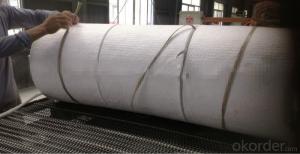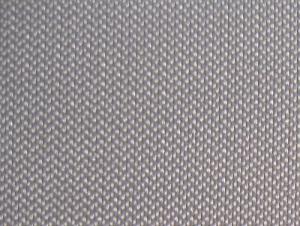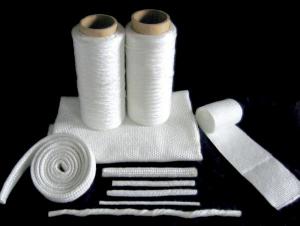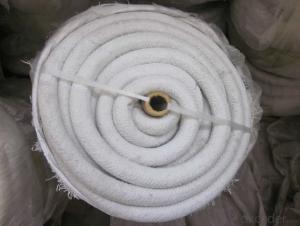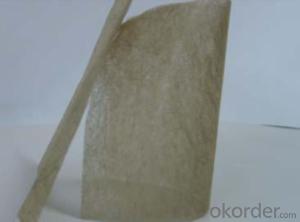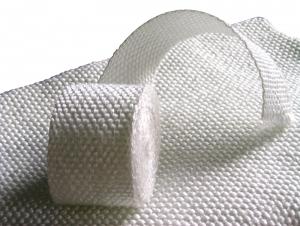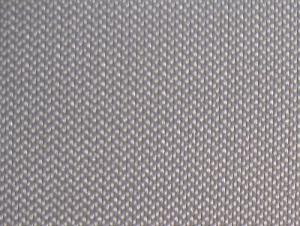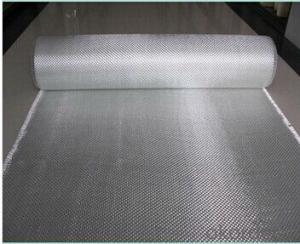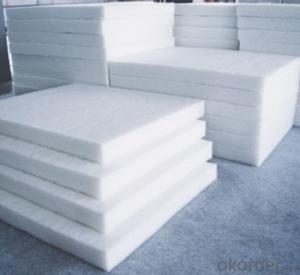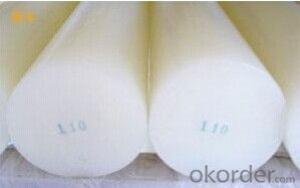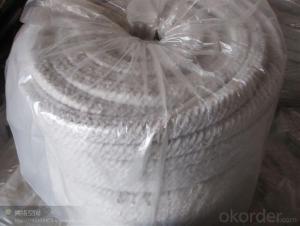Ceramic fiber insulation wool rope
- Loading Port:
- Shanghai
- Payment Terms:
- TT OR LC
- Min Order Qty:
- 10 m.t.
- Supply Capability:
- 100 m.t./month
OKorder Service Pledge
OKorder Financial Service
You Might Also Like
Quick Details
| Application: | Refractory | Grade: | ST (Standard) | Working Temperature: | 1050C |
| Place of Origin: | China (Mainland) | Brand Name: | SUNTHERM | Model Number: | SS wire reinforced |
| Certificate: | BV,SGS,CE,ROHS,ISO9001:2000 | Sample: | Available | MDS Availabel: | Yes |
Packaging & Delivery
| Packaging Detail: | Woven bag , carton or as your demand to custom |
| Delivery Detail: | Within 15 days after received the deposit. |
Specifications
Ceramic fiber textile
AL2O3:45%
Fiber diameter:3-5um
Temperature:1050C ISO9000 certificate
ceramic fiber rope includes square braided rope, round braided rope and twisted rope. All are made from high quality ceramic fiber material. The rope is reinforced with fiberglass filament, or alloy steel wire. Fiberglass filament reinforced rope can work in the temperature below 650C with electric insulating property, while alloy steel wire can work in the temperature 1100C with higher strength. Ceramic fiber textiles (cloth, tape and rope) contain a certain amount of binder material which is normally burned at lower temperature and does not affect the insulation property .The three different styles are designed to fit different application needs: twisted rope is a soft rope, while square and round braid are more dense and solid.
Product information
Item | Ceramic fiber rope |
Type | Glass fiber strengthened ceramic fiber rope Steel wires strengthen ceramic fiber rope |
Applications | • High temperature static seal e.g. door joint or gaskets for flanges • Fire protection e.g. fires proof curtain against welding spark. • The protection of cable, fuel tubes etc • Fireproof twine, wrap, cover etc • Pipe or round duct insulation lagging • Asbestos substitute |
Features | •Excellent high temperature stability • Excellent tensile strength • Excellent thermal electrical insulation • Excellent chemical stability resistance • Low thermal conductivity. |
Packing | In plastic bags, in cartons or according customers requirement. |
Payment Terms | L/C, D/A, D/P, T/T, Western Union, MoneyGram, Cash. |
Delivery Time | Within 15 days after received the deposit. |
Certificate | ISO9001-2000, ISO14001-2000, CE ,SASO,SGS . |
Technical data

- Q:Can glass fiber textiles be used in fashion?
- Yes, glass fiber textiles can be used in fashion. Glass fiber is a versatile material that can be woven into various textile forms, offering unique properties such as strength, durability, and flame resistance. It can be used to create innovative and futuristic designs in fashion, providing a modern and unconventional aesthetic. However, due to its stiffness and potential for discomfort, glass fiber textiles are more commonly used in specialized fashion applications like performance wear, avant-garde fashion, or as accents and embellishments rather than for everyday clothing.
- Q:Can glass fiber textiles be used as insulation?
- Yes, glass fiber textiles can be used as insulation. They are often used in applications such as thermal insulation for buildings, pipes, and appliances due to their excellent thermal resistance properties. Glass fiber textiles can effectively trap air and reduce heat transfer, making them a popular choice for insulation materials.
- Q:Do glass fiber textiles have good insulation properties?
- Yes, glass fiber textiles have good insulation properties. Glass fibers are made from very fine strands of glass, which create a network of tiny air pockets in the material. This network of air pockets helps to trap and slow down the movement of heat and sound, making glass fiber textiles excellent insulators. Additionally, glass fibers have a low thermal conductivity, meaning they do not conduct heat easily, further enhancing their insulation capabilities. These properties make glass fiber textiles commonly used in applications where thermal insulation is required, such as in the construction of buildings, automotive industry, and aerospace industry.
- Q:How do glass fiber textiles contribute to electrical insulation?
- Glass fiber textiles contribute to electrical insulation in several ways. Firstly, glass fibers are excellent insulators due to their low electrical conductivity. They do not allow the flow of electricity through them easily, making them ideal for applications where electrical insulation is required. Additionally, glass fiber textiles have a high dielectric strength, which means they are capable of withstanding high voltages without breaking down or allowing electrical current to pass through. This property is crucial in electrical applications as it ensures the safety and reliability of the insulation. Moreover, glass fibers have a high resistance to heat, which is essential in electrical insulation. They can withstand high temperatures without melting or deforming, ensuring that the insulation remains intact and effective even in demanding environments. Glass fiber textiles are also known for their excellent mechanical strength and durability. This property is important in electrical insulation as it ensures that the insulation remains intact, even under mechanical stress or vibration. Furthermore, glass fibers are resistant to chemicals and moisture, which makes them suitable for applications where exposure to these elements is expected. This resistance ensures that the insulation properties of the glass fiber textiles are not compromised over time, maintaining their effectiveness in electrical insulation. In conclusion, glass fiber textiles contribute to electrical insulation by providing low electrical conductivity, high dielectric strength, resistance to heat, excellent mechanical strength, and durability. These properties make them an ideal choice for a wide range of electrical insulation applications, ensuring safety, reliability, and longevity.
- Q:Can glass fiber textiles be used for insulation in appliances?
- Yes, glass fiber textiles can be used for insulation in appliances. They have excellent thermal insulation properties and are commonly employed in various appliances such as ovens, refrigerators, and water heaters to minimize heat loss and improve energy efficiency.
- Q:Are glass fiber textiles suitable for electrical insulation?
- Glass fiber textiles are well-suited for electrical insulation. They are created by weaving thin strands of glass into a fabric-like material. This material possesses excellent electrical insulating properties, thanks to the non-conductive nature of glass. It can effectively withstand high voltages and lacks conductivity, making it perfect for situations where insulation is necessary to prevent electrical shocks or short circuits. Moreover, glass fiber textiles exhibit strong thermal resistance and can endure high temperatures, further enhancing their appropriateness for electrical insulation purposes. They find extensive usage in several industries like electrical engineering, electronics, and aerospace. These textiles are commonly employed to insulate wires, cables, and electrical equipment.
- Q:Are glass fiber textiles resistant to weathering?
- Yes, glass fiber textiles are highly resistant to weathering. Glass fibers are made from inorganic materials, primarily silica, which gives them excellent resistance to the effects of weathering. They are resistant to ultraviolet (UV) radiation, moisture, and temperature fluctuations. This makes them suitable for outdoor applications, such as in the construction industry for roofing, insulation, and reinforcement materials. Glass fiber textiles also maintain their strength and durability over time, even when exposed to harsh weather conditions, making them a reliable choice for long-lasting and weather-resistant products.
- Q:Can glass fiber textiles be used in reinforcement of paper products?
- Yes, glass fiber textiles can be used in the reinforcement of paper products. Glass fiber textiles are known for their high strength and excellent dimensional stability, making them suitable for enhancing the mechanical properties of paper products. By incorporating glass fiber textiles into paper, the resulting composite material becomes more durable, tear-resistant, and rigid. This makes it ideal for applications where additional strength is required, such as packaging materials, bookbinding, and wall coverings. Furthermore, the use of glass fiber textiles in the reinforcement of paper products can also improve their resistance to moisture, chemicals, and temperature variations. Overall, the addition of glass fiber textiles in paper products can significantly enhance their performance and durability.
- Q:Can glass fiber textiles be used in swimwear or activewear?
- Yes, glass fiber textiles can be used in swimwear or activewear. Glass fiber textiles are known for their durability, lightweight nature, and resistance to chemicals, making them suitable for these applications. They can provide added strength and support to swimwear or activewear, enhancing their performance and longevity.
- Q:Can glass fiber textiles be used in reinforcement of natural fibers?
- Glass fiber textiles have the capability to reinforce natural fibers. The strength and stiffness of glass fiber textiles are well-known, while natural fibers like jute or sisal are appreciated for their economical and eco-friendly nature. By merging these two fiber types, the resulting composite material can enjoy the best qualities each has to offer. The glass fiber textiles can enhance the strength and durability of the natural fibers, making them suitable for applications that demand superior performance and structural integrity. This fiber combination can be particularly advantageous in industries like automotive, aerospace, construction, and sports equipment manufacturing that require lightweight and robust materials. Moreover, the incorporation of glass fiber textiles can also improve the fire resistance and dimensional stability of natural fibers, expanding their potential applications even further.
1. Manufacturer Overview |
|
|---|---|
| Location | |
| Year Established | |
| Annual Output Value | |
| Main Markets | |
| Company Certifications | |
2. Manufacturer Certificates |
|
|---|---|
| a) Certification Name | |
| Range | |
| Reference | |
| Validity Period | |
3. Manufacturer Capability |
|
|---|---|
| a)Trade Capacity | |
| Nearest Port | |
| Export Percentage | |
| No.of Employees in Trade Department | |
| Language Spoken: | |
| b)Factory Information | |
| Factory Size: | |
| No. of Production Lines | |
| Contract Manufacturing | |
| Product Price Range | |
Send your message to us
Ceramic fiber insulation wool rope
- Loading Port:
- Shanghai
- Payment Terms:
- TT OR LC
- Min Order Qty:
- 10 m.t.
- Supply Capability:
- 100 m.t./month
OKorder Service Pledge
OKorder Financial Service
Similar products
New products
Hot products
Related keywords
